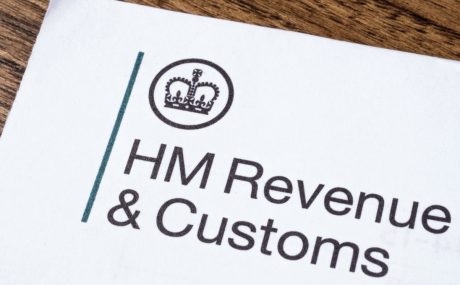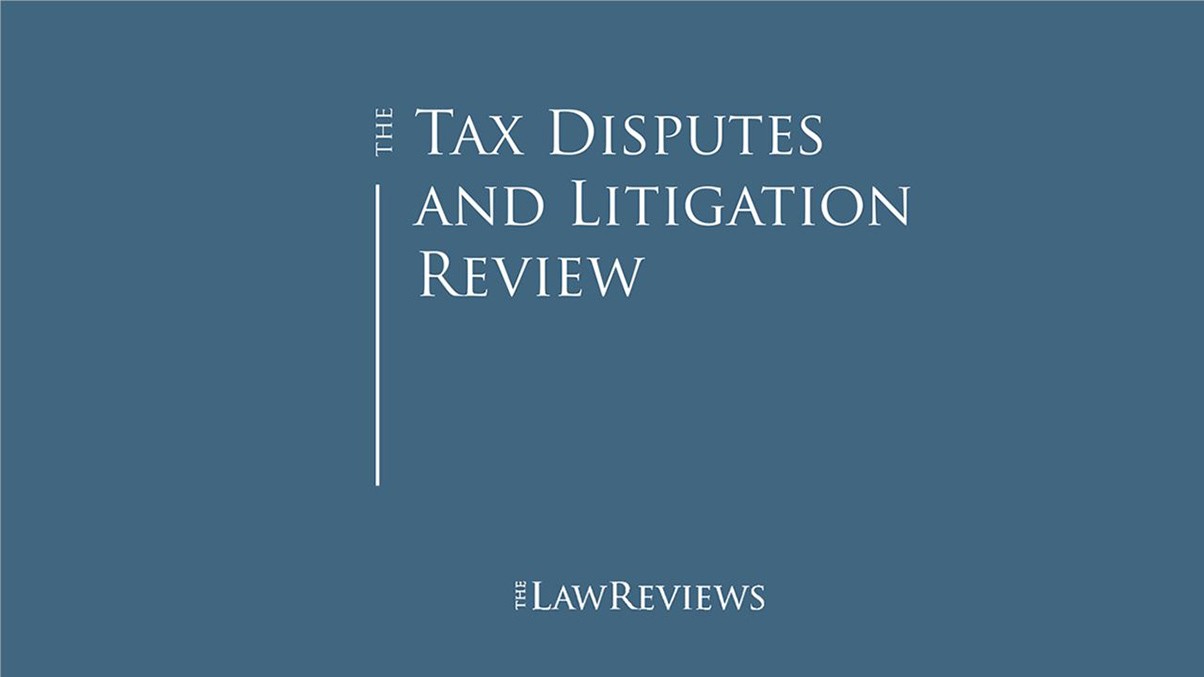Lee Ellis, Victor Cramer, David Pickstone and Cristiana Bulbuc have drafted the United Kingdom chapter of the Ninth Edition of the Tax Disputes and Litigation Review, recently published by The Law Reviews. The book gives information on tax disputes across 22 jurisdictions.
Below is the section of the chapter on how to commence disputes. The introduction can be found here.
Corporation tax
Corporation tax disputes typically arise after a company files its tax return and HMRC opens an enquiry into that return, suspecting that it contains errors. In other words, there is either something on the face of the return that gives cause for concern, or HMRC has information from other sources3 that conflict with what is shown on the tax return (e.g., an apparent omission of income, gains or an erroneous claim for tax relief).
Corporation tax, just like income tax and VAT, is a self-assessed tax.4 Self-assessment imposes an obligation on taxpayers both to notify the tax authorities when they come into the tax system and to make returns of profit, gains or losses and the tax payable thereon. (Section 42, Taxes Management Act (TMA) 1970; Schedule 39, Paragraphs 37–65, FA 2008 reduced the normal time limit for claims and elections; from 1 April 2010, the time limit is four years from the end of the accounting period to which they relate, unless a different time limit is prescribed within the legislation for that particular claim or election. Previously, the time limit was six years. Claims with regard to group relief, capital allowances, research and development tax credits, film tax relief, land remediation tax credits and vaccine research tax credits must also be made in the company’s tax return. If an error or mistake has been made in a claim and subsequently discovered, the claimant may make a supplementary claim within the time allowed for making the original claim).
Generally, returns must be filed within 12 months of the end of the accounting period for which the return is made if it has not been given a notice requiring it to make a tax return. (Schedule 18, Paragraph 14, FA 1998, subject to specific exceptions for companies that prepare commercial accounts for a period longer than 18 months. A return must also be filed within three months from the date on which the notice requiring the return was served). The return must incorporate a declaration that it is correct and complete to the best of the signatory’s knowledge (Schedule 18, Paragraph 3, FA 1998). Companies must file their returns, accounts, computations and any claims for tax relief electronically save for in exceptional circumstances (HMRC’s online corporation tax service is accessible here). A company may amend its return by notice to HMRC within 12 months of the filing date (Schedule 18, Paragraph 15, FA 1998).
Once a taxpayer (such as a company) has notified HMRC of a liability to pay tax and then filed a tax return, HMRC is entitled to enquire into the return, any amendment to it or any claim or election related to it. HMRC does not need to give a reason for opening an enquiry, and there is no right of appeal against such a decision. However, HMRC must start an enquiry by giving notice to the company of its intention to do so – normally within 12 months from the date the return was filed (Schedule 18, Paragraph 24 and 25, FA 1998). If HMRC does not do so within the statutory prescribed time limit, it cannot challenge the return unless it can make a ‘discovery assessment’ (discussed further below) (Schedule 18, Paragraph 24, FA 1998). However, HMRC’s enquiry window may be extended if the return was filed late or was amended.
The enquiry notice is usually given by a letter sent to the taxpayer telling them that HMRC intends to enquire into the tax return. If an agent is acting on behalf of the company, HMRC will, at the same time, send him or her a letter advising him or her of the enquiry notice and sending him or her a copy of the letter sent to the company. This enquiry notice generally includes questions regarding any claim or election in the return and questions about any amount that might affect the tax liability of the company or another company, in that accounting period or another accounting period (Schedule 18, Paragraph 25, FA 1998). HMRC can make only one enquiry into each tax return, unless the company has made subsequent amendments to the return (Schedule 18, Paragraph 24(5), FA 1998). If HMRC is otherwise out of time to issue a notice of enquiry into the original return, the scope of enquiry is limited to the amended content (Schedule 18, Paragraph 25(2), FA 1998). The scope of enquiry would also be restricted if the amendment giving rise to the enquiry consisted of the making or withdrawing of a claim for group relief (Schedule 18, Paragraph 74(4), FA 1998).
Once an enquiry has begun, an iterative process will begin where HMRC gathers information and the parties engage in dialogue in relation to the taxpayer’s return. Interaction is generally through correspondence but the parties may also choose to meet. HMRC also has limited powers to carry out inspections at premises. There is no maximum duration set for an enquiry and HMRC is entitled to maintain an enquiry as long as it still reasonably requires information relevant to the company’s tax position. An enquiry finishes when HMRC issues a closure notice (Schedule 18, Paragraph 32(1A), FA 1998). However, where a taxpayer believes that an enquiry (or part of an enquiry) should be brought to an end, the taxpayer may apply to the Tax Tribunal for a direction that the enquiry (or part of it) be closed (Schedule 18, Paragraph 33, FA 1998).
The closure notice may be:
- to indicate that HMRC has concluded the enquiry in relation to discrete matters within a tax return, but is still investigating other aspects; or
- final, where HMRC has concluded the enquiry into all matters within the return (Schedule 18, Paragraph 32, FA 1998).
HMRC’s policy, however, is that partial closure notices should only be issued in serious or complex cases (HMRC Enquiry Manual: EM2161). Closure notices, whether partial or final, only take effect once issued (Schedule 18, Paragraph 32(1B), FA 1998). Once a closure notice has been issued, HMRC cannot unilaterally withdraw it (Revenue and Customs Commissioners v. Bristol & West Plc [2016] EWCA Civ 397, [2016] STI 1464). Although there is no prescribed form for a closure notice, such notice must state the officer’s conclusions and what, if any, amendment is required to the tax return under enquiry to give effect to them (Schedule 18, Paragraph 34(2), FA 1998). A final closure notice will take account of any partial closure notices and amendments to the return already issued. An appeal against any amendments to the tax return may be made in writing within 30 days after such amendments were notified to the company (HMRC ‘Tax Enquiries: Closure Rules’, 5 December 2016 available here.
Once a taxpayer has appealed a closure notice, there are three main options:
- a different HMRC officer can be asked to carry out a review of the closure notice decision;
- the taxpayer may ask the Tax Tribunal to decide the matter in dispute; or
- the appeal can be settled by agreement at any time.
Reviews are not compulsory and, where HMRC carries out a review but the taxpayer still disagrees with the decision, the taxpayer can ask the Tribunal to decide the issue or continue negotiations with HMRC to settle the appeal by agreement.
HMRC and the taxpayer can agree to refer questions to the Tax Tribunal during the course of an enquiry, (Schedule 18, Paragraphs 31A-31D, FA 1998) although this is of limited use to taxpayers, as HMRC’s consent is required. Enquiries can remain open for a number of years and the ability of the taxpayer to apply to the Tribunal for a closure notice is an important safeguard.
If, during an enquiry, HMRC forms the view that the amount of tax stated in the company’s self-assessment is insufficient and that, unless it is immediately increased, there is likely to be a loss of tax to the Crown, HMRC may amend the company’s self-assessment to make good the deficiency (a ‘jeopardy amendment’) (Schedule 18, Paragraph 30, FA 1998). In doing so, HMRC can seek payment from a taxpayer without having to wait until it is ready to issue a closure notice. The circumstances likely to give rise to a jeopardy amendment include where a taxpayer intends to dispose of significant assets or become non-resident or insolvent HMRC Enquiry Manual: EM1953).
The self-assessment system is designed to give finality to the taxpayer. The general principle is that once an enquiry has been closed, or the enquiry window has passed, HMRC can no longer challenge the return (Schedule 18, Paragraph 34(2)(b), FA 199). HMRC’s discovery powers provide an exception to this general principle. These powers broadly enable HMRC to assess tax in relation to closed years if HMRC discovers that tax has been under-assessed and the under-assessment is attributable either to (Schedule 18, Paragraphs 41-45, FA 1998):
- careless or deliberate conduct of the taxpayer or a person acting on his or her behalf; or
- something of which the officer could not have been reasonably expected to be aware at the time the enquiry window closed on the basis of the information made available to him or her before that time.
Similarly, if HMRC discovers that a return for an accounting period incorrectly states an amount that affects, or may affect, the tax payable for another accounting period or by another company within a group, they may make a discovery determination or assessment of the amount of tax due by the company based on the information available to the officer (Schedule 18, Paragraph 41(2), FA 1998).
Discovery assessments must be made within a certain time limit as follows:
- four years from the end of the year or accounting period in question;
- six years from the end of the year or period, if tax has been lost because the taxpayer (or their agent) was careless; or
- 20 years from the end of the year or period if the loss of tax was brought about deliberately by the taxpayer (or their agent), as a result of failure to notify liability without a reasonable excuse, or failure to comply with an obligation to provide HMRC with information in relation to a tax avoidance arrangement, or as a result of arrangements expected to give rise to tax advantages.
According to case law, HMRC must have ‘newly’ reached the conclusion that there is an insufficiency, meaning that once the discovery is made, HMRC must raise an assessment with reasonable diligence. Otherwise the discovery is no longer new, but becomes ‘stale’. It is not sufficient for HMRC merely to act within the statutory time limits for raising an assessment. There is, however, no fixed deadline, and the time only starts running once HMRC has made a discovery, not as soon as an HMRC officer begins to seek information about a possible under-assessment. Generally, a discovery is made when the original view was taken and was not delayed by the time that was required to gather the evidence (Hargreaves [2019] UKFTT 244 (TC)).
It is possible for HMRC to take steps to keep a discovery from becoming stale, such as notifying the taxpayer of a discovery in the expectation that matters could be resolved without the need for a formal assessment, or waiting for the final determination of a relevant appeal by a different taxpayer. HMRC cannot use these steps to justify leaving matters open for an unlimited period. Case law suggests that a delay of three to four months may be acceptable, or seven months during which HMRC continued to attempt to settle matters, but that 18 months (or longer) is not.( Corbally-Stourton [2008] STC (SCD) 907, Pattullo [2016] UKUT 270 (TCC), para 44, Alan Anderson [2016] UKFTT 335 (TC), Tooth [2019] EWCA Civ 826, Beagles [2018] UKUT 380 (TCC), Charman [2018] UKFTT 765 (TC), Tutty [2019] UKFTT 3 (TC), Hargreaves [2019] UKFTT 244 (TC), Oriel [2019] UKFTT 503 (TC)).
Often, particularly where a dispute has run over several years, more than one HMRC officer will have been involved in a case. This complicates questions about whether an HMRC officer has made a discovery. The courts have generally resisted suggestions that HMRC can ‘refresh’ a discovery by handing a file to a new officer who ‘discovers’ a matter that the first officer already knew about (Charlton [2013] STC 866, para 28, Tooth [2018] UKUT 38 (TCC), Oriel [2019] UKFTT 503 (TC)). In any event, the burden of proving, on the balance of probabilities, that the conditions for issuing a discovery assessment have been met falls on HMRC.
HMRC frequently issues discovery assessments in order to protect HMRC’s position where a compliance check (not a self-assessment enquiry) for the period is ongoing and assessment time limits are soon to expire. The taxpayer has the right to challenge a discovery assessment on the grounds that HMRC did not meet one or more of the tests for their issue or the substantive grounds for the assessment or its amount, or because discovery became stale. In the same way that, as described above, the terms of a closure notice (following an enquiry) limit the scope and subject matter of an appeal against that closure notice, so too an appeal against a discovery assessment is generally limited to the scope of that assessment. Such appeal also must be made in writing within 30 days of the date of the assessment. The taxpayer can again decide whether to request an internal HMRC review or a Tax Tribunal hearing.
Disclosure
Quite reasonably, HMRC has the right to enquire into a tax return, but this power would be very weak if it were unable to access the documents and other information it believes is needed to enable it to check the accuracy of a return.
Thus, during the course of an enquiry, HMRC may request, if reasonably required for the purpose of checking the taxpayer’s tax position, that the taxpayer provide information and documents that are in that taxpayer’s possession or power and that are relevant to its own tax position. If HMRC issues such an information notice, (Schedule 36, Paragraph 1, FA 2008. Copies of documents can be produced unless the notice stipulates that originals must be submitted. A taxpayer that fails to comply with a notice may be liable to pay penalties) the taxpayer must produce the information within such time, by such means and in such format as provided for in the notice (Schedule 36, Paragraph 7, FA 2008). HMRC’s information powers extend to being able to seek information from third parties by the issue of third-party notices. HMRC can seek the advance approval of the Tax Tribunal to the issue of either a taxpayer or third party notice, if certain conditions are satisfied. HMRC can also seek information relevant to tax liabilities in certain overseas jurisdictions through its network of double taxation treaties or via other international instruments that provide for mutual assistance and exchange of information by tax authorities.
There is limited right of appeal to the Tax Tribunal against an information notice from HMRC. Limited, because there is no right of appeal against a requirement in the notice to provide any information or produce any document that forms part of the taxpayer’s statutory records (Schedule 36, Paragraph 29, FA 2008). Statutory records are records that the taxpayer is required to keep and preserve under relevant statute or any other enactment relating to a tax (Schedule 36, Paragraph 62(1), FA 2008).
An appeal must be made to HMRC, in writing and specifying the grounds of appeal, within 30 days of receipt of the notice (Schedule 36, Paragraph 32, FA 2008). The simplest solution is to appeal against the requirement on the basis that the document in question is not a statutory record, that it is not reasonably required for the purpose of checking the taxpayer’s tax position, or that it would be unduly onerous to comply with the information notice.
Other direct taxes
Save for certain time limits, statutory provisions, specific anti-avoidance rules, and other complexities intrinsic in each specific area of tax, identical rules apply for other self-assessed taxes such as in respect of income tax and taxation of partnerships (including limited liability partnerships).
VAT
VAT disputes are usually driven by a taxpayer or HMRC trying to amend a VAT return. In most cases the time limit for either the taxpayer or HMRC to amend a return is four years from the end of the relevant tax period.
Where taxpayers fail to make VAT returns, or make incomplete or incorrect returns, HMRC may issue an assessment. They may also issue default surcharges or penalties where VAT returns are late or inaccurate. HMRC assessments, default surcharges or penalties are decisions that the taxpayer has a right to have reviewed by HMRC, or to appeal to the Tax Tribunal.
Where taxpayers seek to amend a historic return, HMRC may either accept or reject the amendment. Again, taxpayers have the right to request a review of a rejection, or appeal directly to the Tax Tribunal.
If a taxpayer disagrees with all or part of a decision from HMRC, the taxpayer must either appeal to the Tax Tribunal within 30 days of the date of the decision, or request that HMRC conducts an internal review of their decision. Any internal review must be conducted within 45 days of the request, and the taxpayer can appeal the outcome of the review to the Tax Tribunal within 30 days.
The Tax Tribunal does not have jurisdiction to deal with issues of public law (fairness, reasonableness and procedural impropriety) and these must be pursued by way of judicial review.
Stamp duty land tax (SDLT)
With effect from 1 March 2019 the filing deadline for SDLT returns was reduced from 30 days to 14 days after the effective date of the transaction. HMRC must notify taxpayers within nine months of the filing date if they intend to investigate a transaction. Thereafter HMRC can only investigate if they feel the error was careless or deliberate, or if the taxpayer failed to disclose information. The investigation process and the resolution of any dispute follows a similar, if not the same, process as outlined above for other taxes.
The full UK chapter of the Tax Disputes and Litigation Review Ninth Edition, can be accessed here.
The Tax Disputes and Litigation Review Ninth Edition, can be accessed in full here.
Reproduced with permission from Law Business Research Ltd
This article was first published in March 2021
For further information please contact Nick Barette
© 2021
You can find further information regarding our expertise, experience and team on our Tax Litigation and Resolution pages.
If you require assistance from our team, please contact us or request a call back from one of our lawyers by submitting this form.
Subscribe – In order to receive our news straight to your inbox, subscribe here. Our newsletters are sent no more than once a month.




